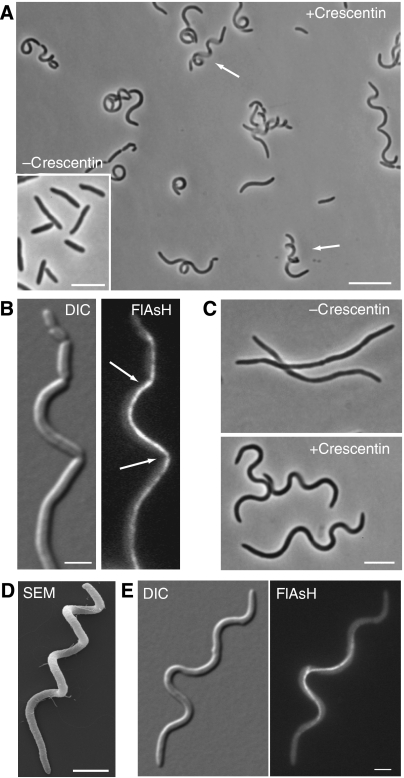Figure 5.
Crescentin can produce cell curvature in E. coli. (A) Composite phase-contrast image (assembled from overlapping frames) of CJW2193 (E. coli MC1000/pBAD18[Cm]creS) cells grown in M9-glycerol supplemented with 0.2% arabinose (to induce crescentin production) for 4 h. The arrows indicate elongated, helical cells. The inset (bar 5 μm) shows the morphology of CJW2193 cells when grown in the presence of 0.2% glucose, which represses crescentin production. Bar, 10 μm. (B) CJW2194 cells (MC1000/pBAD18creS-tc) grown for 4 h in M9-glycerol with 0.2% arabinose and stained with FlAsH to visualize the crescentin-TC structure. Arrows show cell chaining, presumably caused by interference at cell division sites by the crescentin structure. Bar, 2 μm. (C) CJW2193 cells (E. coli MC1000/pBAD18[Cm]creS) grown in M9-glycerol with 0.2% glucose for 3.5 h (to repress crescentin production) or 0.2% arabinose for 4 h (to induce crescentin synthesis) in the presence of cephalexin (to block cell division). Bar, 5 μm. (D) SEM of a cephalexin-treated CJW2193 E. coli cell producing crescentin for 4.5 h. (E) Cephalexin-treated CJW2194 (MC1000/pBAD18[Cm]creS-tc) grown in M9-glycerol with arabinose for 4.5 h and stained with FlAsH to visualize the crescentin-TC structure. Bars, 2 μm.

